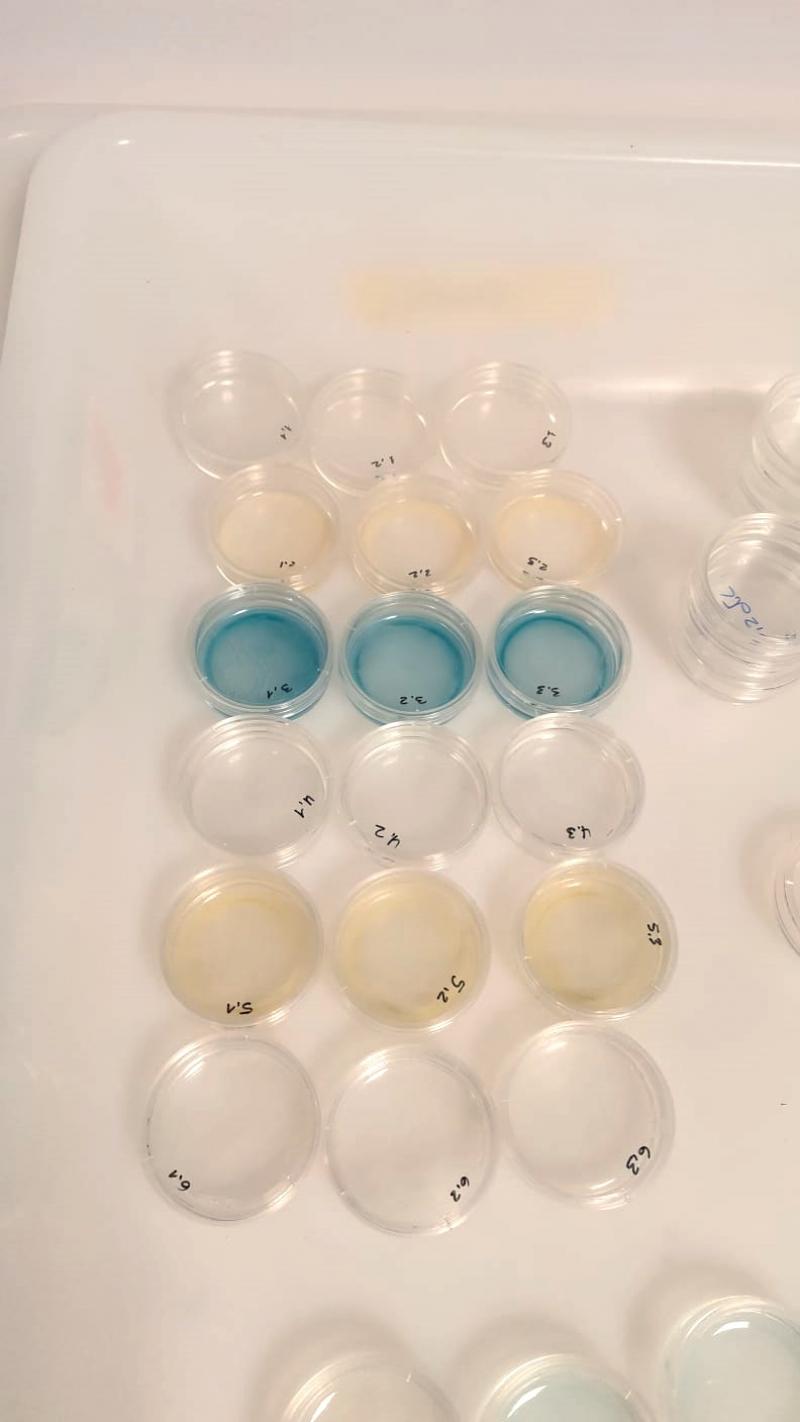Fungicides are one of the most commonly used phytosanitary products to combat diseases threatening vineyards, such as mildew or cluster rot. In the search for sustainability in viticulture, it is necessary to implement environmentally friendly management tools, reducing total inputs and costs for the grape grower. Additionally, given the growth of organic viticulture, biological control agents are called upon to play a very relevant role in the arsenal of management tools. In this line, a key challenge is the study of the compatibility of biological control agents with other chemically-based treatments.
Entomopathogenic nematodes are well-known biological control agents. Recently, the In-Vid group has demonstrated the potential of their application in the vineyard canopy to control pests such as the grape moth (see https://doi.org/10.1016/j.cropro.2023.106392). However, in practical terms, it is essential to investigate the compatibility of these nematodes with agrochemicals, such as fungicides, commonly used in vineyards.
In this laboratory study, we analyzed the compatibility of the nematodes Steinernema feltiae and S. carpocapsae with five fungicides authorized for use in grapevines, three approved for organic cultivation (Bacillus pumilus, sulfur, and copper) and two of chemical synthesis (Trifloxystrobin and Mancozeb). First, we explored whether their exposure for 4 and 24 hours could kill the nematodes. The results showed that only the viability of S. feltiae was reduced after 24 hours of exposure to sulfur and copper. Next, we evaluated whether the nematodes' killing ability and virulence were affected. In this case, again, S. feltiae was only affected by copper and Mancozeb in its immediate response after two days. However, after five days, the effect did not persist, and the nematodes were equally effective as the other treatments. In the case of S. carpocapsae, full compatibility was observed with the five fungicides evaluated, with no impact on its viability or virulence.
In conclusion, both populations of entomopathogenic nematodes could be co-applied on the same day with the evaluated fungicides. However, further studies on multitrophic interactions are required to ensure the success of these co-applications.
Additional information:
Campos-Herrera, R., Carpentero, E., Puelles, M., Ramos Sáez de Ojer, J.L., Blanco-Pérez, R., 2023. Entomopathogenic nematode compatibility with vineyard fungicides. Journal of Nematology, 55, e-2023-1. doi: 10.2478/jofnem-2023-0057








